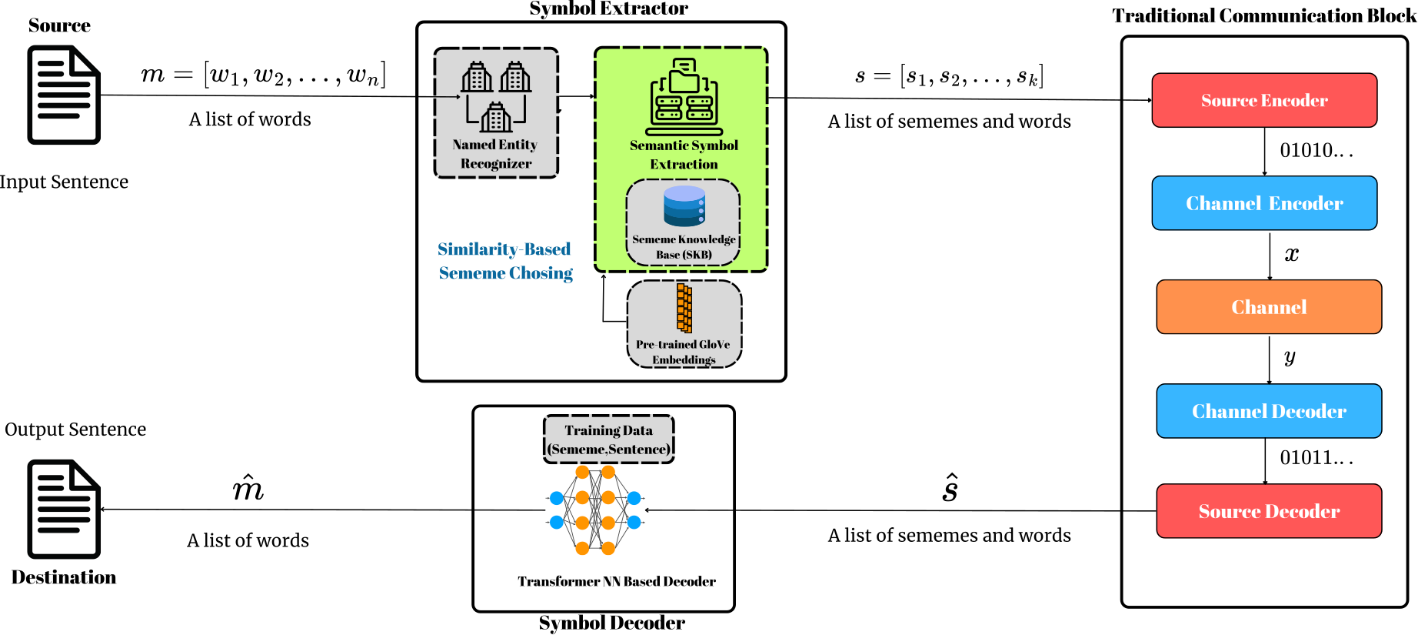Happy to share our latest paper titled “Sememe Based Semantic Communications” published in IEEE Communications Letters!
We introduced a concept in linguistics called sememes to the domain of semantic communications. Sememes are the smallest and indivisible semantic units of word meaning. A predefined set of sememes is theoretically considered “the periodic table” of meaning in a natural language.
Expressing words in terms of combinations of a limited number of sememes is essential for interpreting the intrinsic semantics of a word, which is an essential step towards “defining the meaning behind bits”, which is central importance in semantic communications.
We proposed SememeSC, which adopts a novel semantic encoding method based on sememes and a semantic decoding method based on deep learning (DL) for text transmission. Our extensive experimentation shows that SememeSC outperforms baselines in additive white Gaussian noise (AWGN) and Rayleigh fading channels.
Check out the paper for more details!
Paper: https://ieeexplore.ieee.org/document/10648841
Code: https://github.com/koc-lab/sememesc
Abstract:
Semantic communication, a paradigm concentrating on correctly transmitting underlying semantic information instead of bit sequences, has proved effective. Deep learning (DL) enabled methods are mainly used with basic natural language processing (NLP) techniques for the semantic communication of texts. However, most of the previous work approaches the problem by treating text as a generic continuum of sequences of textual information without leveraging underlying intrinsic and advanced linguistic properties of natural languages. A prime example of such linguistic features is the sememes, the smallest and indivisible semantic units of textual information (analogous to the Periodic Table of Matter). This paper proposes Sememe-based Semantic Communications (SememeSC), a semantic communication paradigm that utilizes sememe knowledge in natural languages. We provided experimental results verifying that the proposed SememeSC performs superior to baselines in additive white Gaussian noise (AWGN) and Rayleigh fading channels.
